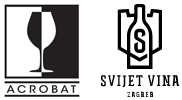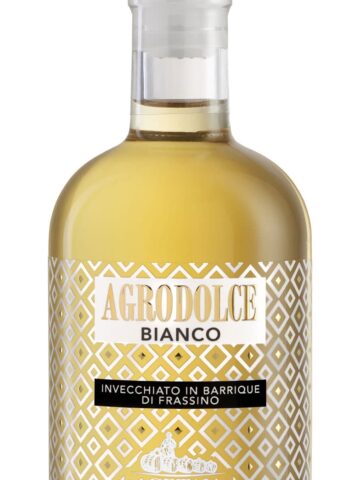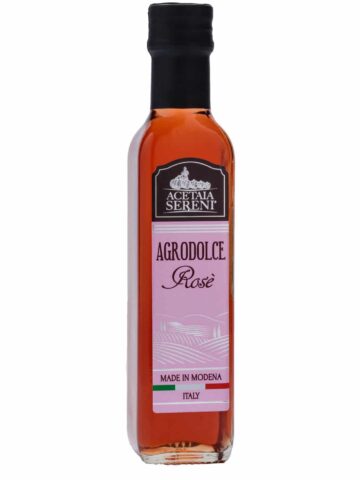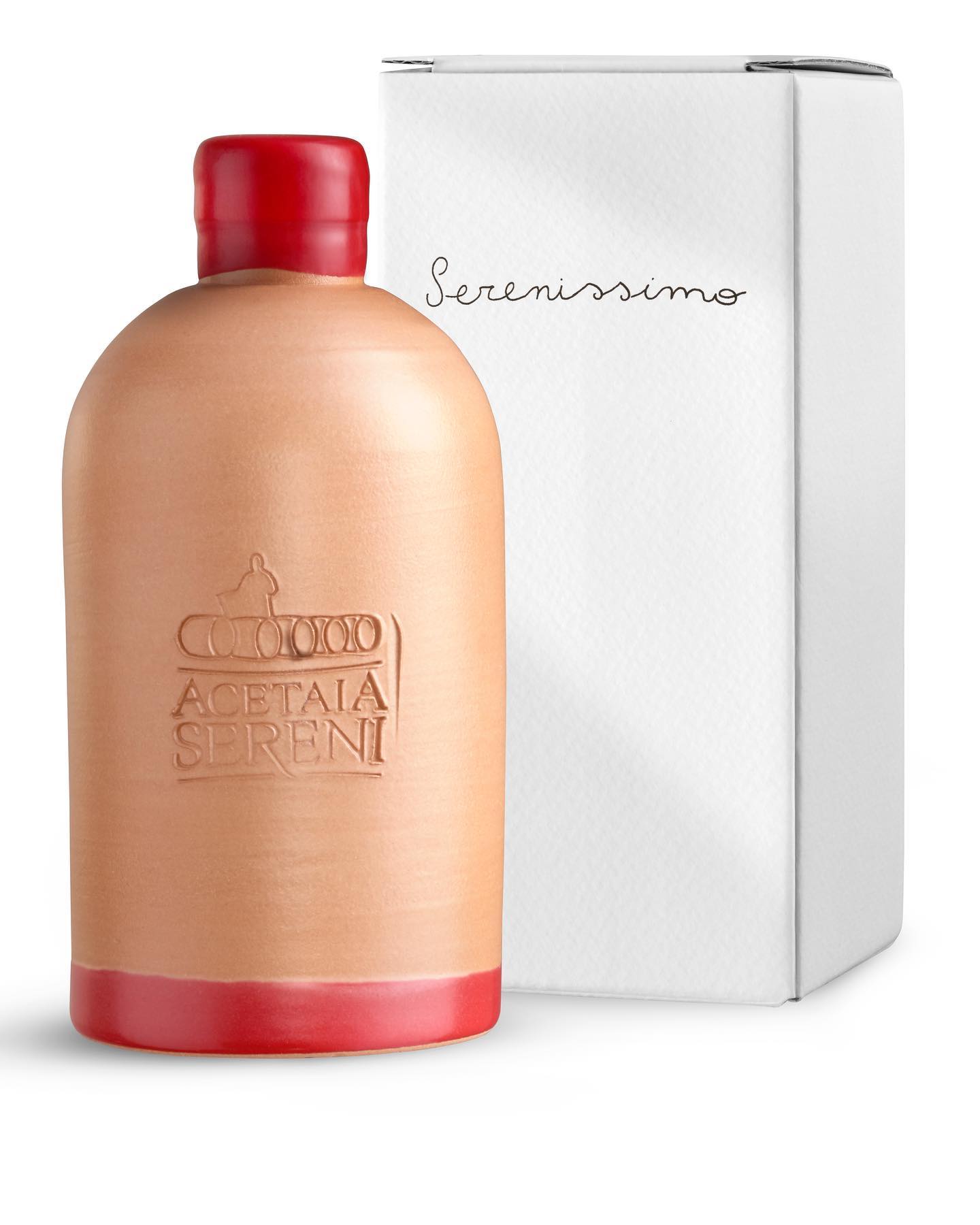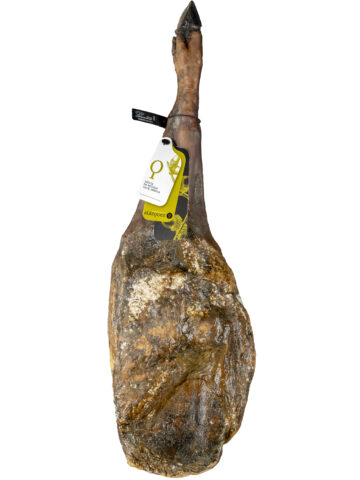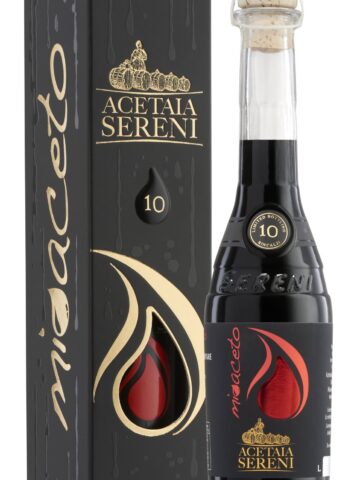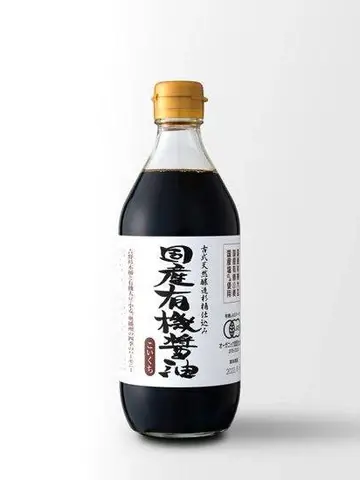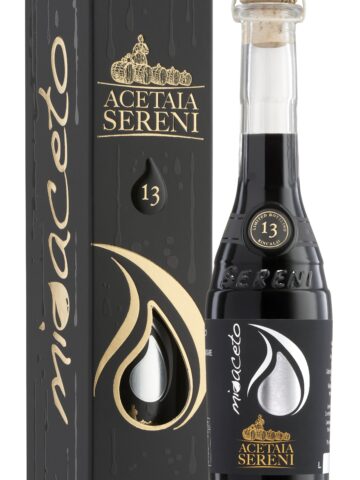Povijest / History
Sve je počelo spajanjem dviju obitelji 1931. godine: vjenčanje Santine Montorsi i Celestina Serenija u gorju Modene oživjelo je proizvodnju Aceto Balsamico, koja je i danas aktivna, četiri generacije kasnije, u Acetaia Sereni.
La batteria (doslovno “baterija”, ali izraz koji se koristi za set bačvica koje sadrže balzamični ocat) bio je tradicionalni vjenčani miraz za bogate i plemićke obitelji u Emiliji-Romagni. Uključiti aceto balsamico u svoj brak značilo je unijeti dio svoje obitelji u stvaranje nove. Zahvaljujući dugotrajnosti octa, kad bi bračni par imao potomstvo, njihov bi se balzam ponovno poklanjao za vjenčanja njihove djece i tako dalje i tako dalje.
Santina je odlučila uzgajati grožđe i povećavati svoju količinu balsamica litru po litru svake godine, što je dovelo do toga da njezin sin Attilio na kraju kupi još bačvi. Godine 1982. Attiliov sin Pierluigi bio je taj koji je pokrenuo prodaju obiteljskog balzamičnog octa i, zajedno sa svojom suprugom Elisabettom, počeo postojano razvijati svoju proizvodnju u brdima Villabianca gdje se još uvijek nalazi acetaia (farma octa). Desetljećima kasnije, Acetaia Sereni još uvijek je jedna od rijetkih u kojoj se cijeli proces odvija na jednom imanju: od vendemmia ( berbe) njihovih 15 hektara vinograda preko odležavanja do punjenja konačnog proizvoda.
Godine 1993. osnovan je Consorzio Tutela Aceto Balsamico di Modena kako bi regulirao balzamični ocat i djelovao kao čuvar propisa za proizvode. Ovdje je proizvedena i prva boca DOP Aceto Balsamico Tradizionale di Modena, koju je Attilio Sereni zapečatio brojem 001. Neotvorena boca još uvijek stoji u galeriji Acetaia Sereni, a Consorzio danas štiti 51 proizvođača balzamičnog octa. Od svih njih, Acetaia Sereni proizvodi najviše DOP octa.
Danas, Pierluigijevi sinovi, Francesco i Umberto, objašnjavaju da je brak njihovih roditelja inicirao set bačava s oznakom PIERLUIGI E ELISABETTA; kada im se rodila mlađa sestra nastala je FEDERICA batteria; oba brata imaju vlastiti set balzamičnog octa i onog dana kada će imati djecu, daljnja baterija bit će dodana u obiteljsku kolekciju.
Balzamični ocat iz Modene može započeti ili završiti samo s obitelji. Rođenja i brakovi obilježeni su octom, opipljivim prikazom veza između ljudi iz Modene. Smrt, razvod ili zanemarivanje glavni su uzroci prekida proizvodnje obitelji.
Razumljivo, balzamiko je duboko ukorijenjen aspekt modenske kulture – i u obliku ponosa i ljubomore. Modenesi su snažno radili na tome da aceto balsamico ostane što lokalniji, a tek su 80-ih Modenesi zapravo počeli prodavati dvije vrste balsamica. (Proizvod se koristio u modenskim domovima ili za darivanje/bračne svrhe nekoliko stoljeća!)
It all started with the merger of two families in 1931: the wedding of Santina Montorsi and Celestino Sereni in the mountains of Modena revived the production of Aceto Balsamico, which is still active today, four generations later, in Acetaia Serena.
La batterya (literally “the battery”, but a term used for a set of barrels containing balsamic vinegar) was a traditional wedding dowry for rich and noble families in Emilia-Romagna. To include aceto balsamico in your marriage meant is to bring a part of your family into the creation of a new one. Thanks to the longevity of the vinegar, when the married couple had offspring, their balsam would be given again for their children’s weddings and so on and so forth.
Santina decided to grow grapes and increase her amount of balsamic liter by liter each year, which led to her son Attilio eventually buying more barrels. In 1982, Attili’s son Pierluigi was the one who started it sale of the family balsamic vinegar and, together with his wife Elisabetta, began to steadily develop his production in the hills of Villabianca where the acetaia (vinegar farm) is still located. Decades later, Acetaia Sereni still it is always one of the few in which the entire process takes place on one estate: from the vendemio (harvest) of their 15 hectares of vineyards to aging to bottling of the final product.
In 1993, the Consorzio Tutela Aceto Balsamico di Modena was established to regulate balsamic vinegar and act as the guardian of product regulations. The first bottle of DOP Aceto Balsamico Tradizionale di Modena was also produced here which Attilio Sereni sealed with the number 001. The unopened bottle still stands in the Acetaia Sereni gallery, and today the Consorzio protects 51 producers of balsamic vinegar. Of all of them, Acetaia Sereni produces the most DOP vinegar.
Today, Pierluigi’s sons, Francesco and Umberto, explain that their parents’ marriage initiated a set of casks marked PIERLUIGI E ELISABETTA; when their younger sister was born, FEDERICA batteria was born; both brothers have their own balsamic vinegar set and the day they have children, another battery will be added to the family collection.
Balsamic vinegar of Modena can start or end only with family. Births and marriages are marked with vinegar, a tangible representation of the bonds between the people of Modena. Death, divorce or neglect are the main causes of interruption of family production.
Understandably, balsamic is a deeply rooted aspect of Modena culture – both in the form of pride and jealousy. The Modenesi worked hard to keep aceto balsamico as local as possible, and it wasn’t until the 80s that the Modenesi actually started selling two types of balsamic. (The product has been used in fashionable homes or for gift/marriage purposes for several centuries!)
